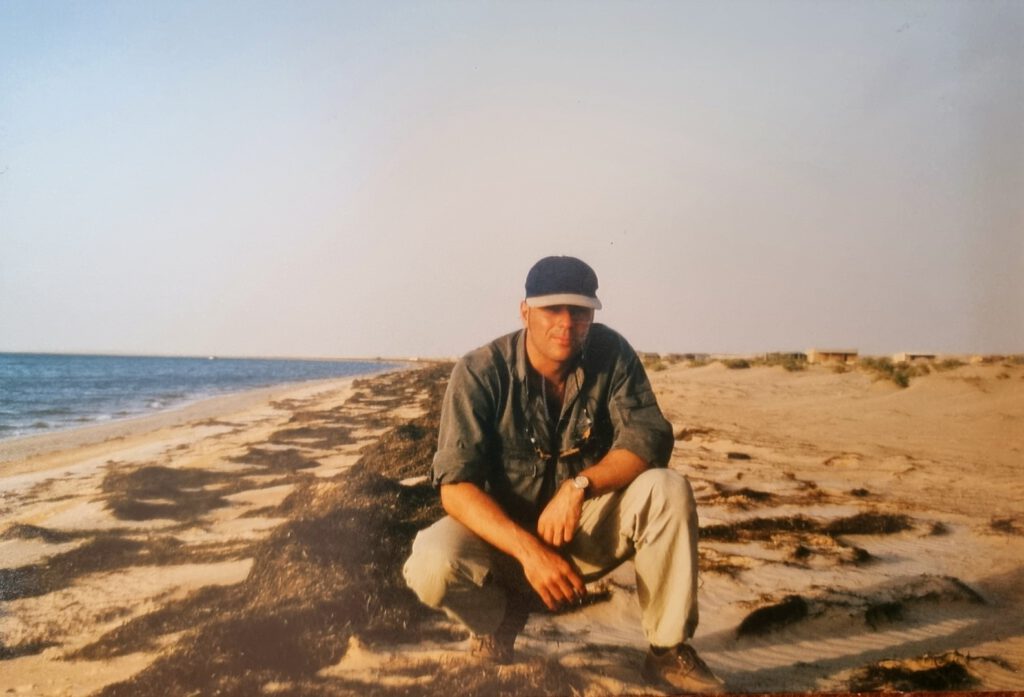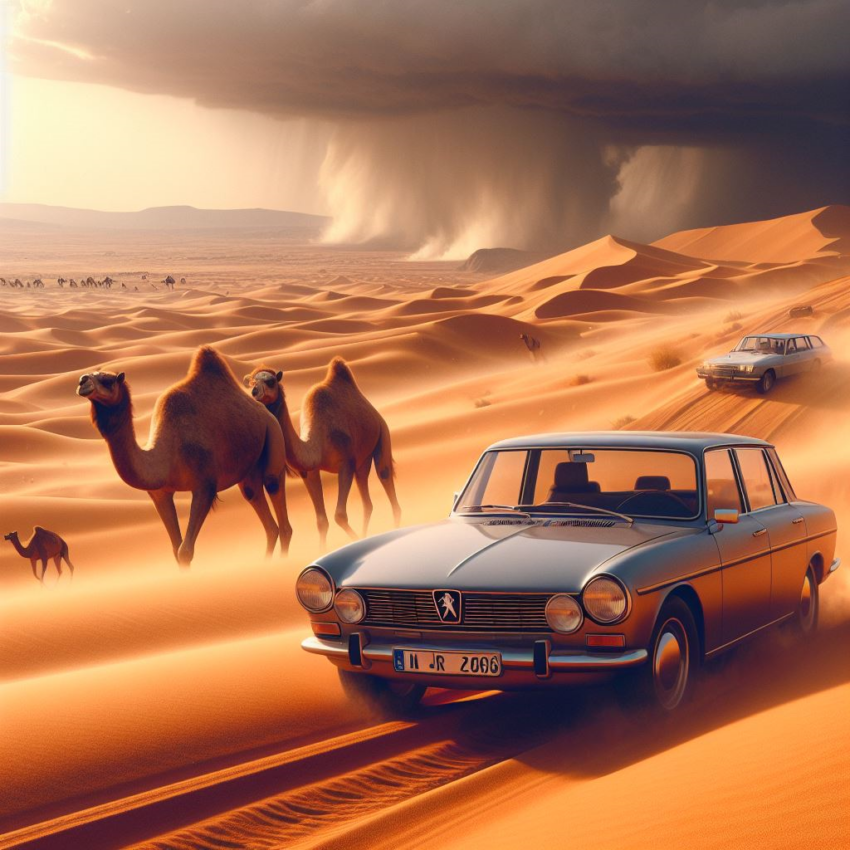(A trip from 1997)
Crossing the Sahara had been one of my greatest dreams, and it was about to come true. I took a 2 1/2 month leave from my job, packed my sunglasses and flew to Casablanca, Morocco. The plan was to hitch a ride with one of the car smuggling caravans that were supposed to run once a week or so from Morocco through Mauretania to Senegal and further.

Car smuggling has turned out to be a lucrative business over the last years, because foreign cars are subject to high import taxes in countries like Senegal, Gambia or Niger. To meet the demand, clever Europeans (and rarely Americans or Africans) have started buying old used cars in Europe and bringing them to West and Central Africa overland. As to avoid the taxes, the cars have to be brought into the country illegally, achieved either by false papers (e.g. a forged carnet de passage) or by bribing border officials.
Then these cars are sold on the black market and the smugglers fly back home. Most people do this once or twice in their life for the fun of it, but some people who bring down cars to West Africa are professional smugglers, constantly buying cars in Europe, driving them to West Africa and flying home. Sometimes they work in pairs, with someone being responsible for finding cheap used cars in Europe and the other one doing the driving. I even met a guy who was doing “contract work”, i.e. bringing down cars which he had promised to deliver on an earlier trip!
These runs are mostly done by French and Belgium drivers, who have the advantage of getting along well with French-speaking West-African authorities. Additionally, French cars like Peugeots and Renaults sell best in Francophone Africa, because the African mechanics know them best, and spare parts are obtainable.
With the route through Algeria being closed due to the hot political climate, the only way to cross the Sahara these days from north to south is to go from Morocco through Mauretania to Senegal. As this route passes through the still disputed “Western Sahara” area (where the Polisario once fought), vehicles are required to join a convoi with military protection, which leaves the southern Moroccan town of Dhakla once a week or so.
Obviously the Moroccan army does not want foreigners spying around in a military area, where broken tanks and mines still abound, and they certainly do not want a foreigner hit a mine (which still happens every once in a while), so everybody has to join the convoi.
So I made my way to Dhakla from Casablanca by public transport, with a stop over in Marakesh, surely a fascinating city!


In Dhakla I set out to find someone who’d take me through the desert. I was willing to offer my help during the drive, e.g. helping digging the car out of the sand, and I would even offer some money.
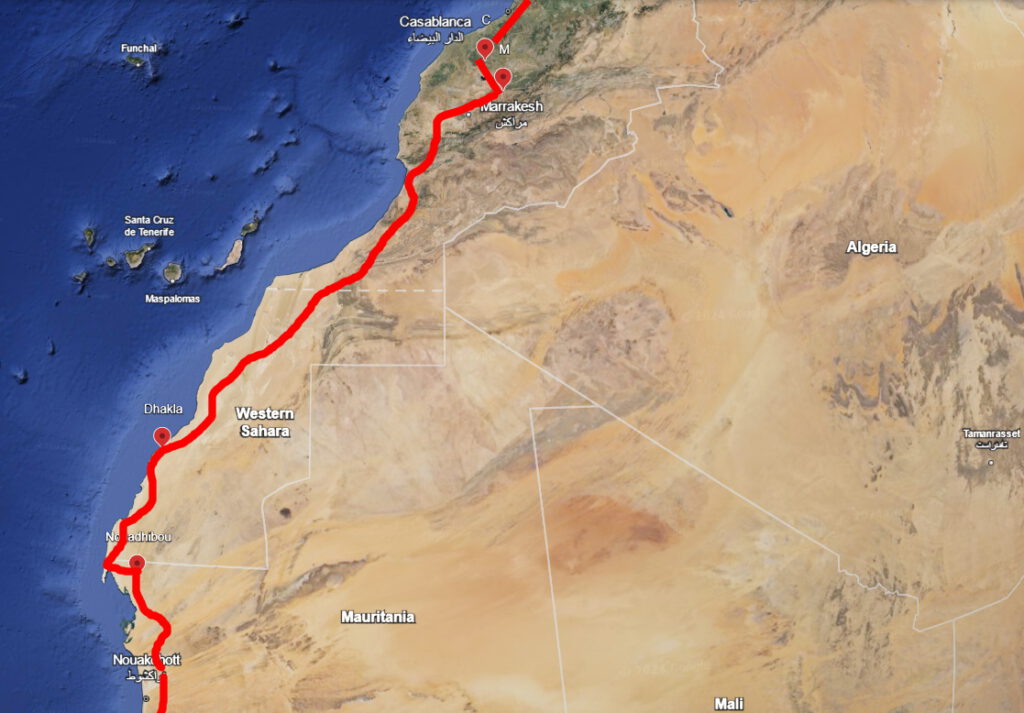
But how to find a smuggler? Whom should I look for – shady, unshaved guys wearing dark sunglasses? Fortunately it was easier than expected: in a bar I met Hans and Christian, two Germans who were taking two cars to Senegal. Both were seasoned desert foxes, having taken cars and even buses through Algeria years before.
Actually this was to be one final “reunion” run, where they planned to re-live the old times. After having been turned back at the Algerian border, they decided to drive through Mauretania, their planned schedule already being thoroughly mixed up.
They told stories of smuggling in Algeria, e.g. with a guy who drove a “triple”: a semitrailer with two trucks as cargo, which each hold a car in their load area! With this semitrailer he would drive through the desert, trying to sell everything in Nigeria. By selling such a load he could easily have made 50.000 US$ profit, although he had to deduct the bribes he had to pay. After all, the guy probably had a hard time explaining why he brought in a trailer, two trucks and two cars, and it took him half a year to complete the trip. Not exactly the typical tourist!
Hans and Christian had smuggled buses through Algeria, which sell well in West and Central Africa. Actually, buses and minibuses probably make the highest profit. For bribes they have filled the buses with old refrigerators, which are in high demand as well. Must have been an interesting bargaining at the borders!
This time they were trying to smuggle an old Peugeot 505, built in the late seventies, and a 1981 Toyota Landcruiser. Both cars almost fell apart already, but Hans and Christian had enough experience in fixing them each time a part fell off.
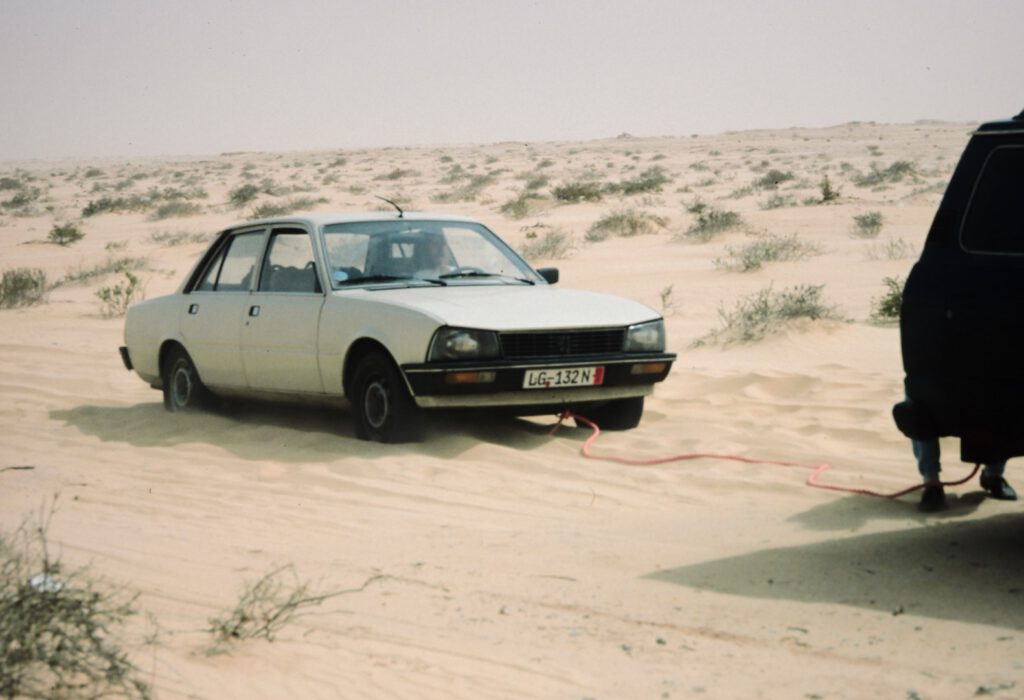
After finishing the paperwork in Dhakla, we started the next morning. At least that was the intention – it took us until mid-afternoon before we moved. I rode shotgun on the Peugeot. Although Christian is a good driver, experienced in manouevering sand fields, we still got stuck every so often. No wonder with a sedan that was built for asphalt roads and has a clearance of about thirty centimeters! Most of the times we got away with towing the Peugeot out with the Landcruiser, but sometimes we had to dig the car out, while the desert sun scorched us.
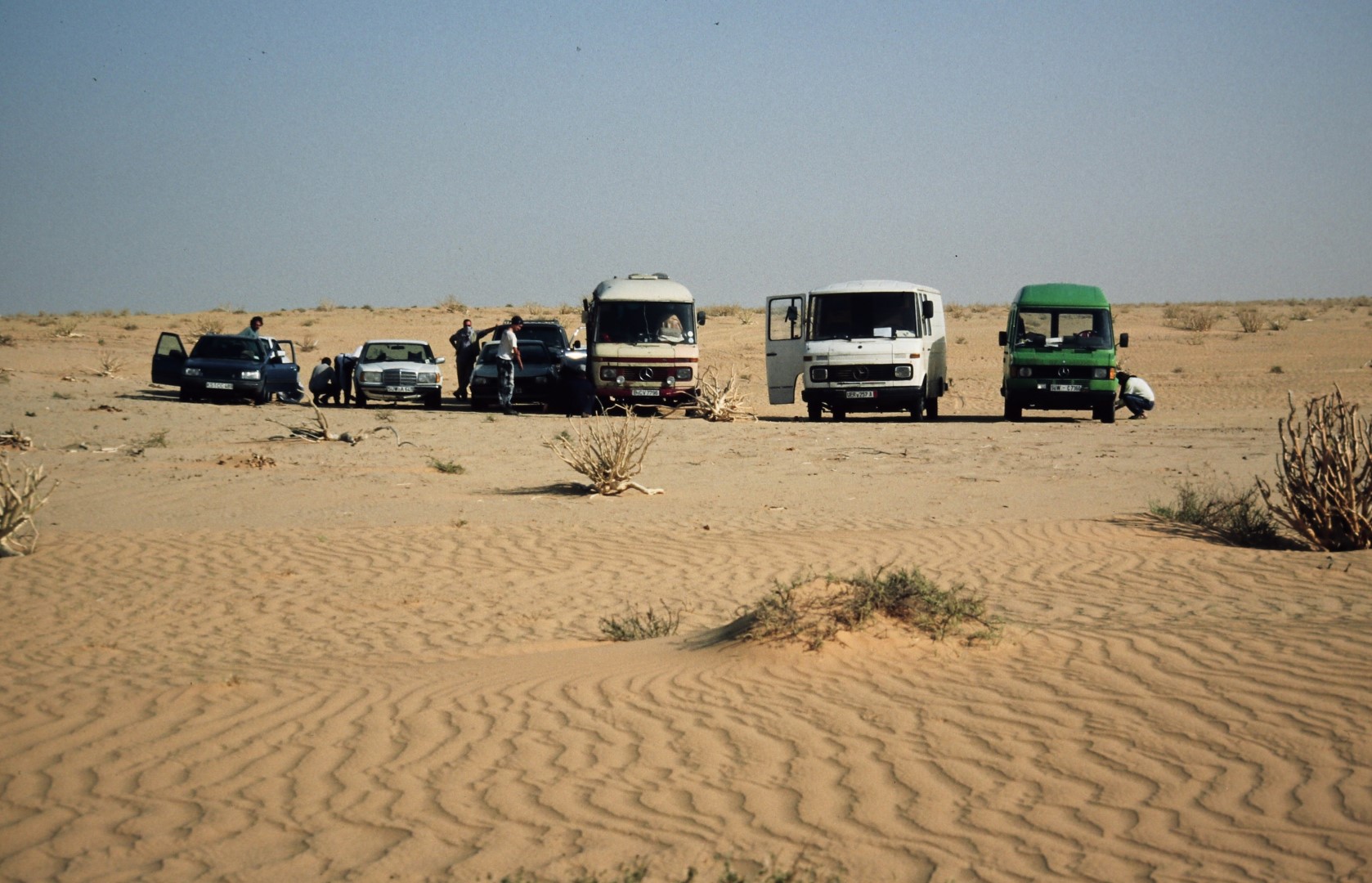
The convoi consisted of about fifteen cars, about half of them destined to be smuggled – easy to determine because almost all of them were at least ten years old. The other half was made up from “tourist” cars, shiny new Landrovers, Mitsubishi jeeps or similar that had all the latest stuff on them: dark windows, GPS, extra wheels, extra spotlights, winches etc. Some of them had been carefully worked on to look like a Camel Trophy car, and next to these cars our Peugeot looked totally out of place!
The tourist cars were driven by people who wanted an offroad adventure, sometimes with the plan to continue the trip to South Africa or Kenya (the recent events in former Zaire have closed that route for now).
So basically there were two different groups in the convoi, the “smugglers” and the “tourists”. During the trip, the groups didn’t really mix.
But to show off, we (the “smugglers”) had a flashy car in our group, too: a brand-new, white Mercedes! This was a contract job for a minister in Gambia, being carried out by another German who actually had recruited some friends – they brought another relatively new car (a Renault) and two minivans.


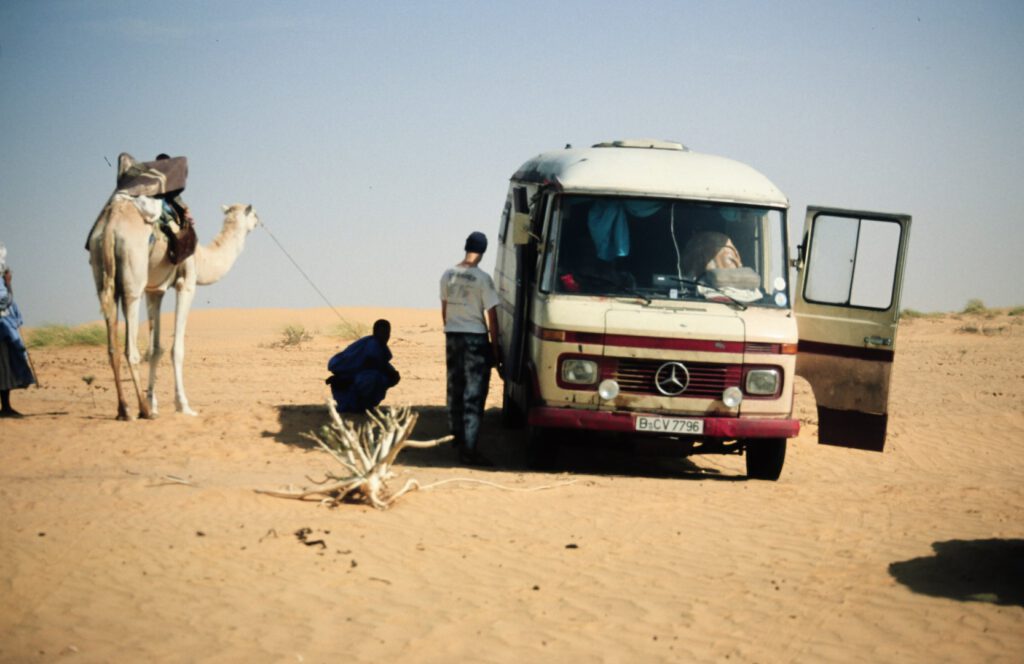
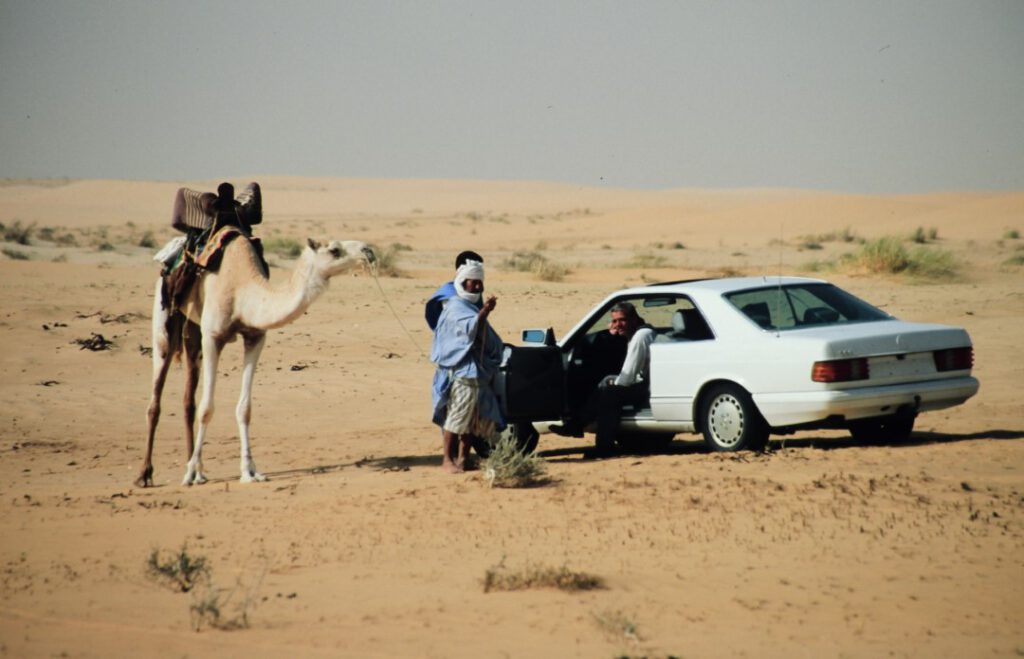
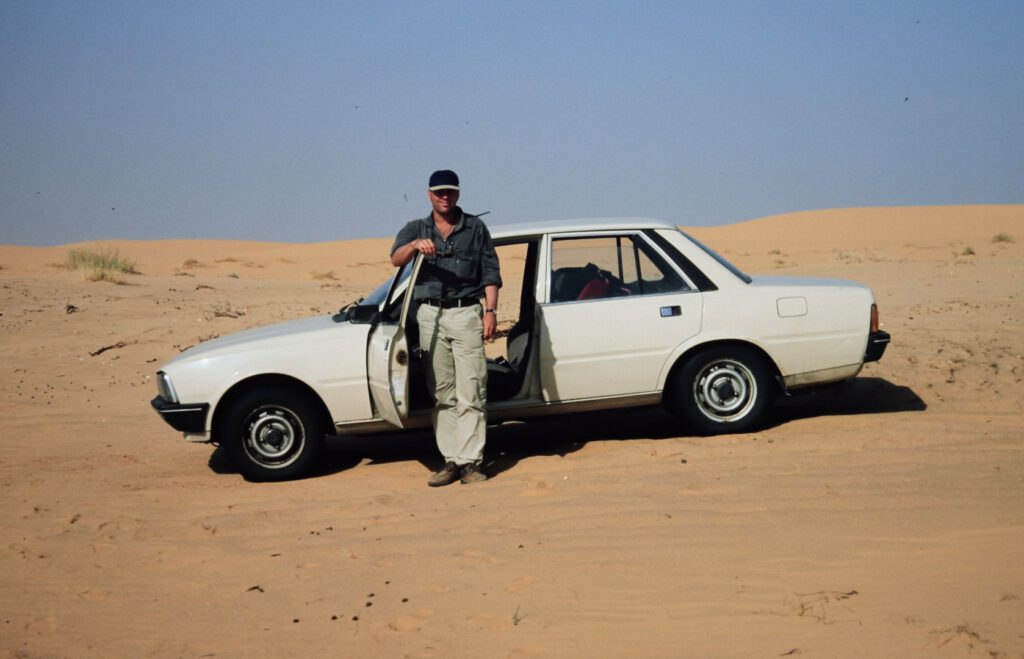
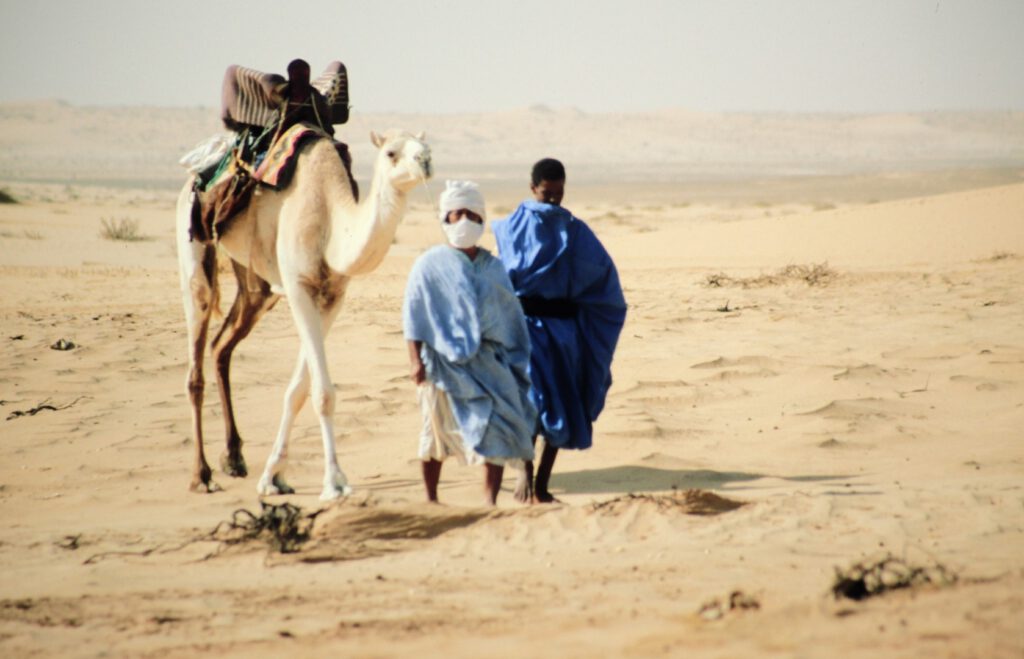
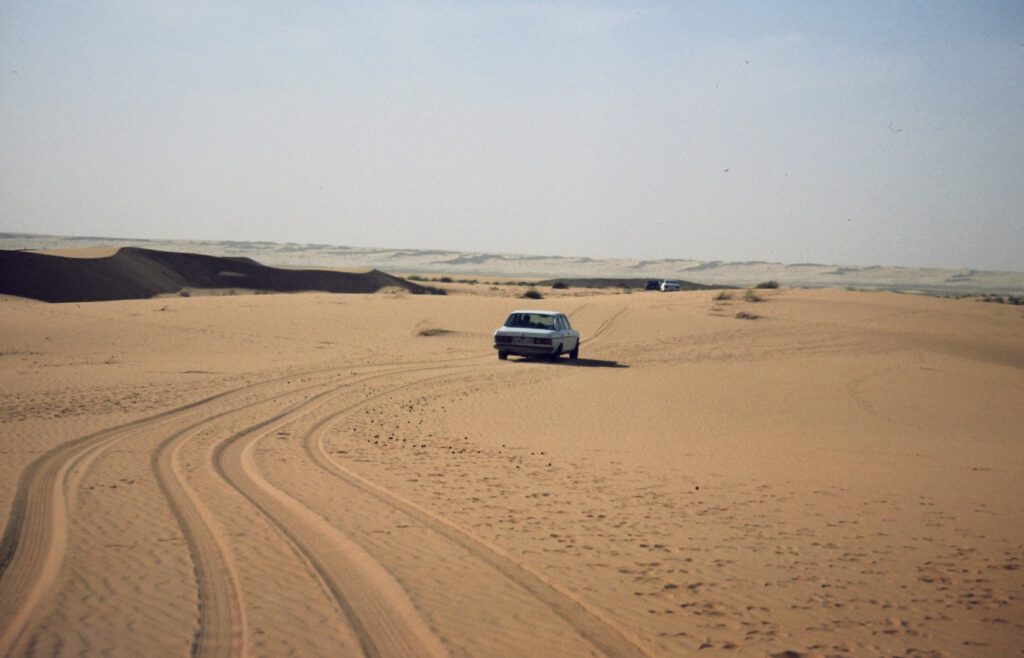
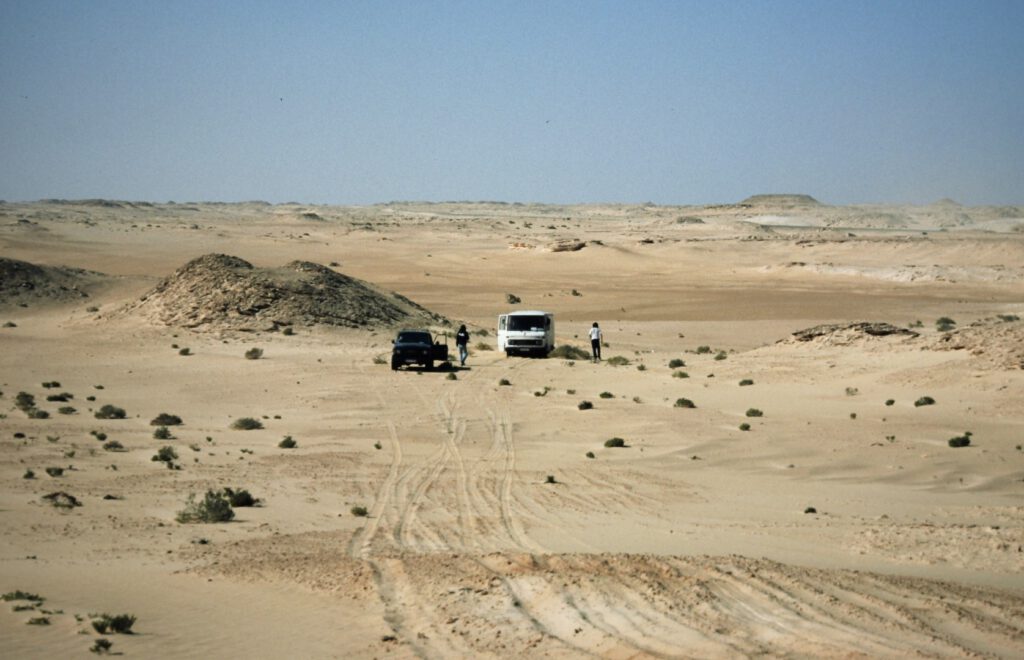


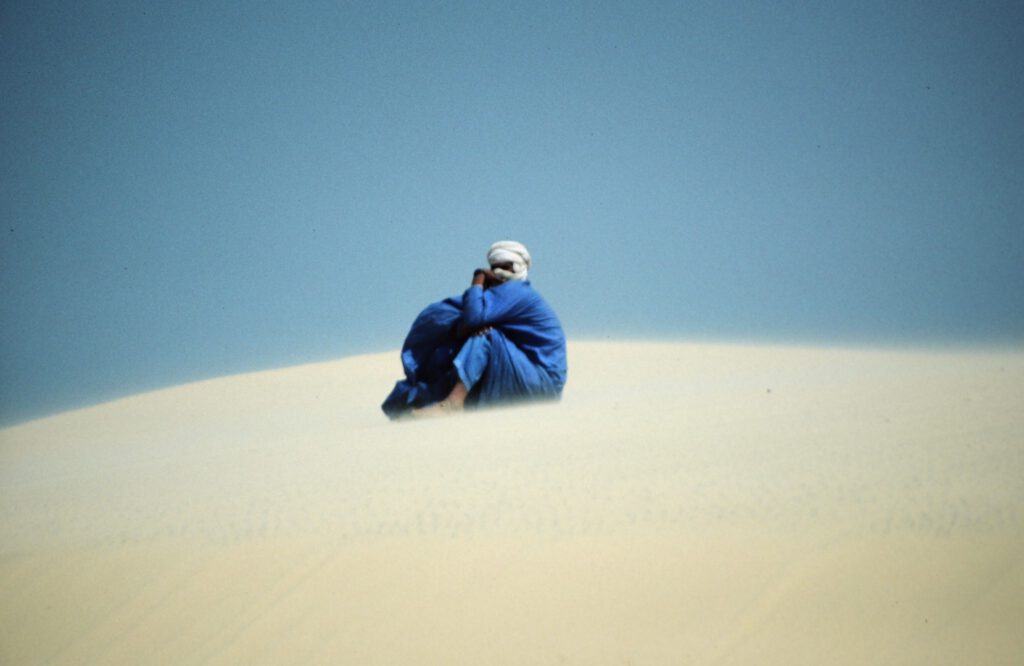
The trip to Nouadhibou, Mauretania’s second largest city located on the coast in the North-West (and without a road-access to any other city, except by four-wheel-drive), took only a few days, passing by the occasional car blown up by a land mine. The driving was not too difficult, as the ground was hard enough in most places to drive upon.
Only sometimes we would have to go through sandfields, which required careful preparation: Christian would lower the air pressure of the tires, take a long run-up and try to let the car “swim” through the sandfield. This worked out almost always. When it didn’t, we would try to haul the car out of the sandpit with the Landcruiser, and if we couldn’t, we would bring out two pieces of sheet metal and start the exhausting job of moving the car ahead inch by inch.
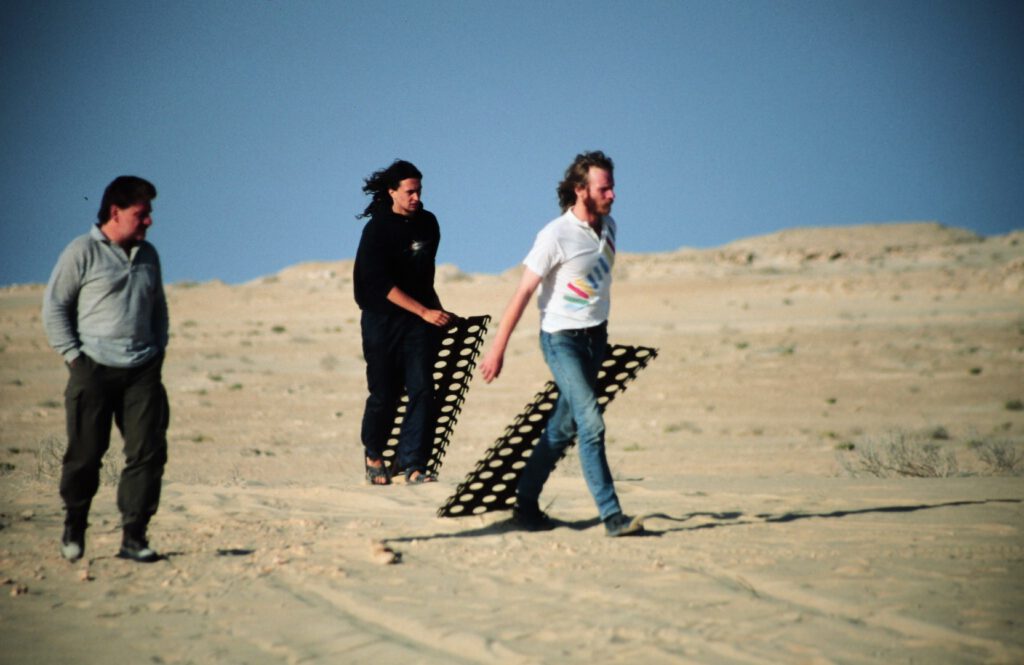
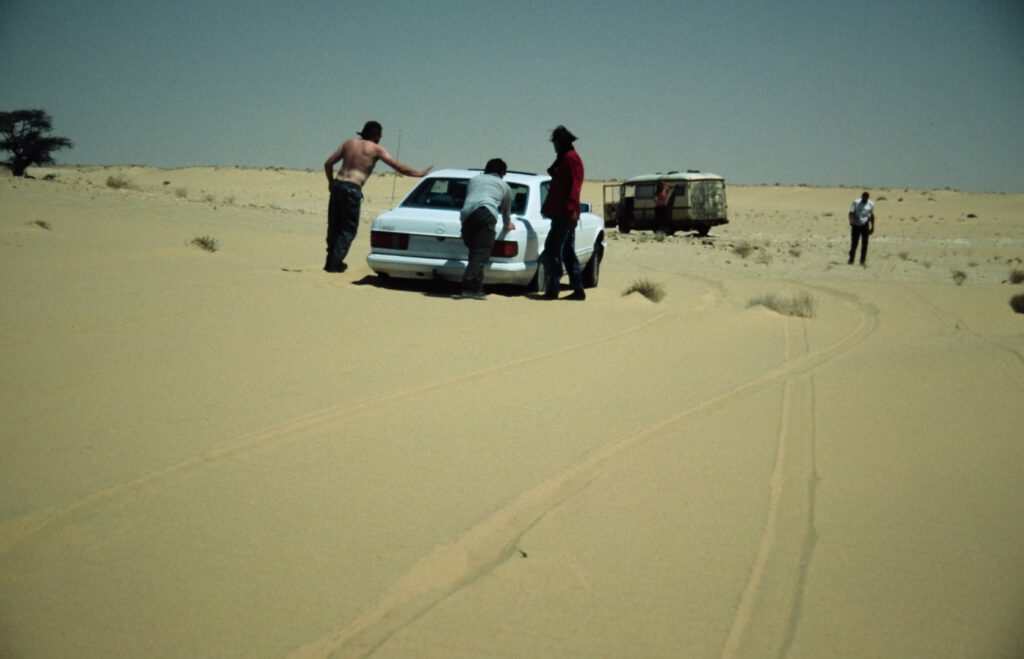
Everybody would help us, just as we would help anybody else who got stuck, although some people caused more trouble than others: four British guys managed to get stuck with their totally overweighted Landrover in every second sandpit, annoying everybody else, especially us who mastered those sandpits with normal sedans.

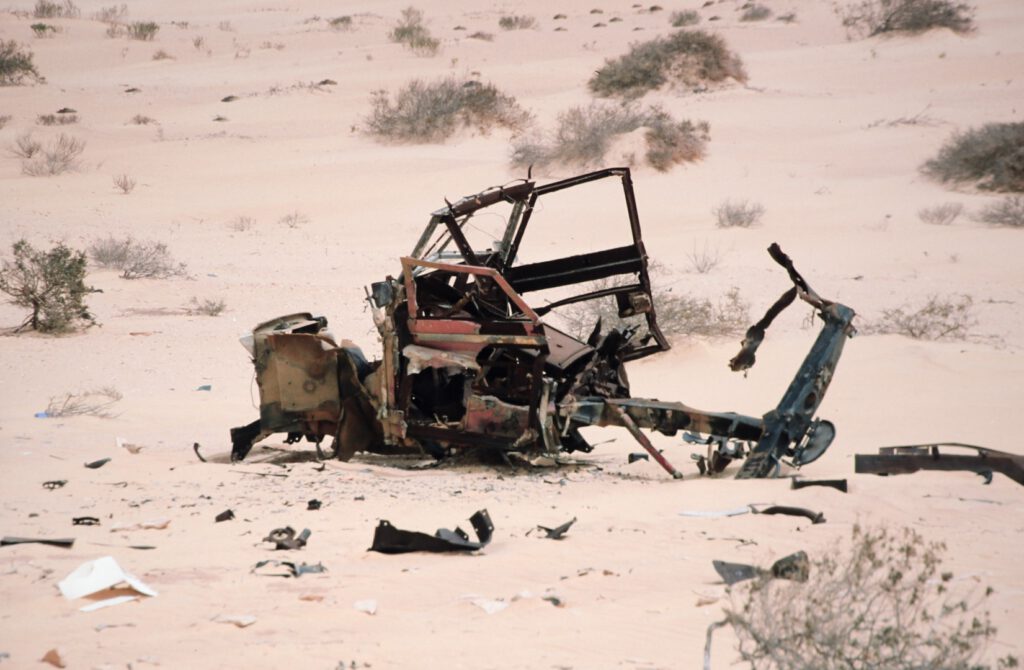
However, the longest delays were caused by border formalities: in the middle of nowhere, a small shack made of corrugated iron or a tent would appear with military personnel based there, who inspected out passports rigorously. I suspect they did this to fight boredom, as we had had official paper checks already in Dhakla. One guy of the convoi told me he had waited at one border for ten days once before he was let through…

The army vehicles left us at the border and pointed out the way to Nouadhibou, only a short distance ahead. There we did the usual paperwork including bribery (in about eight hours) and stocked up on food, although little could be found.
Getting to Nouakchott, the capital of Mauretania, turned out to be equally difficult. As no road connects these two towns, we had to drive through the desert again, although this time in part on the beach! There is a stretch of about eighty kilometers where you have to drive on the beach as there is no other route suitable for cars. This requires expert timing, though, because the beach can be manouevered only at low tide.
If you are caught on this stretch when high tide comes, you have the choice of either driving into the sand dunes which come right to the edge of the water, or try to drive through the water. In both cases the car will be lost and you’ll be stranded in the desert!
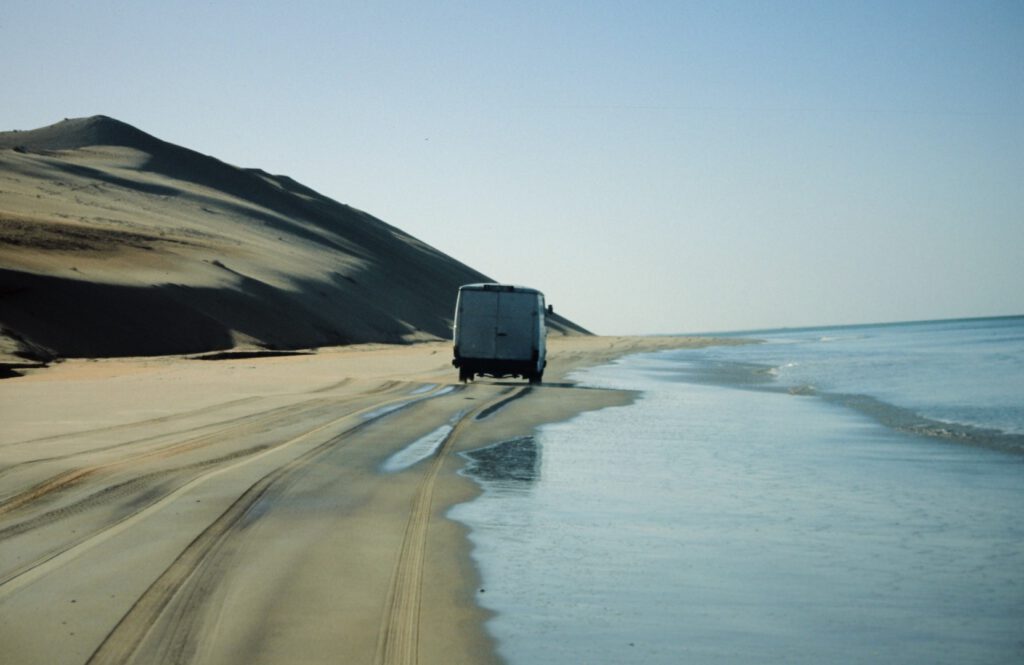
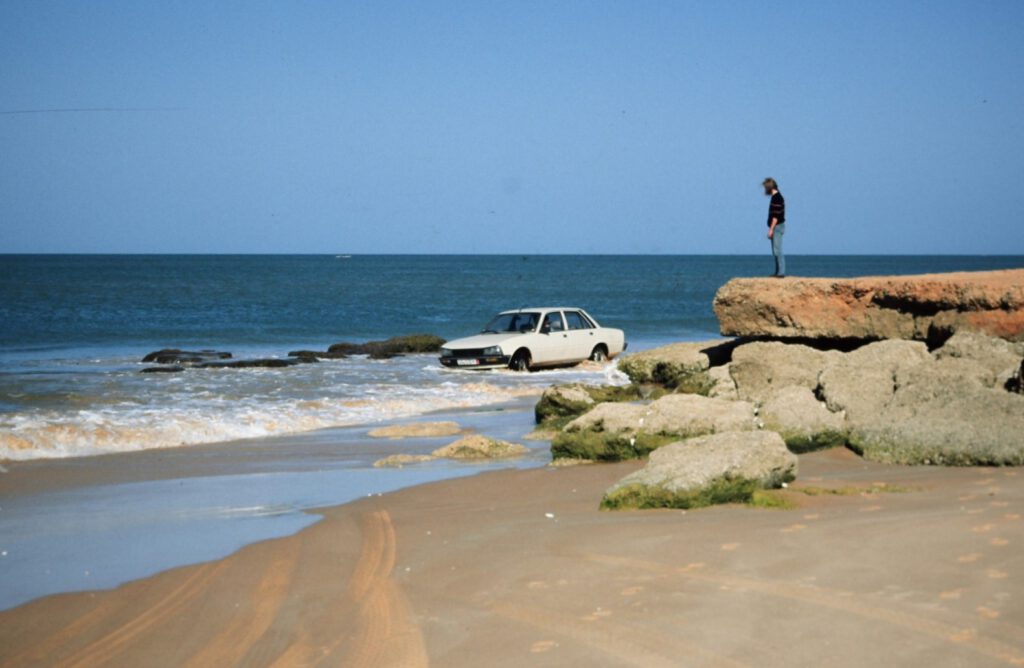
We formed a group of seven people and hired a guide, Abdullah. He claimed to know the route well, and in fact he was the guide of choice of one of the Germans in our group, who had done this trip several times already, always with Abdullah.
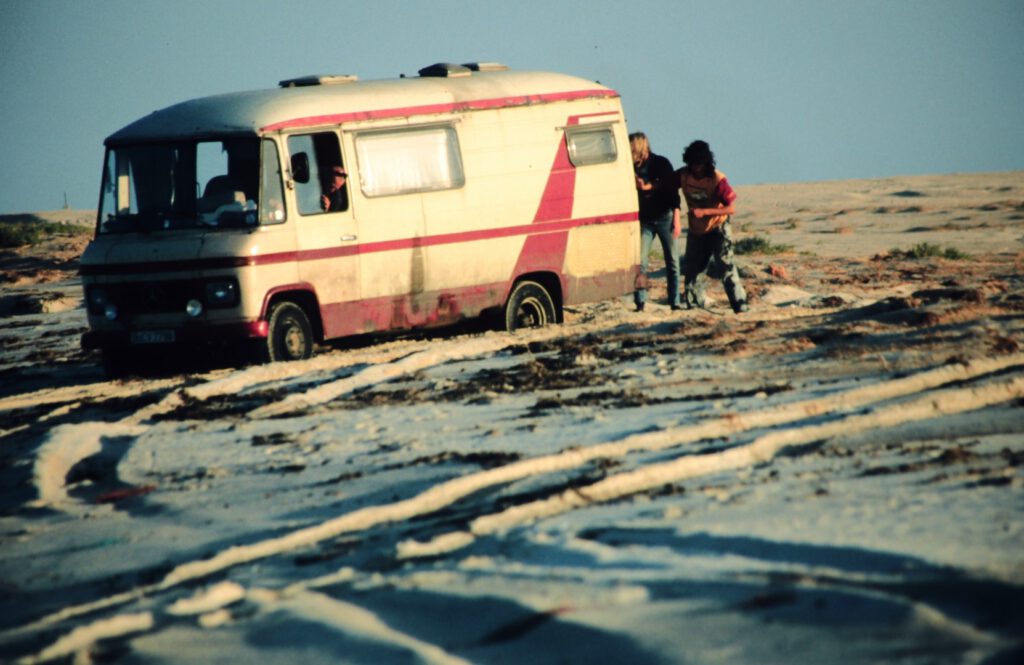
Despite the availability of technical gimmicks like GPS, having a guide is essential: I saw two French coming back to Nouadhibou after they had given up on their plan to reach Nouakchott on their own. After a week of aimless driving around in the desert they used their GPS to find the way back – they did not have a guide.
And we made it! After waiting for the “right moment” about a day, after passing quite a few given-up cars in the sand, after digging out our cars several times and after a few more days we reached Nouakchott!
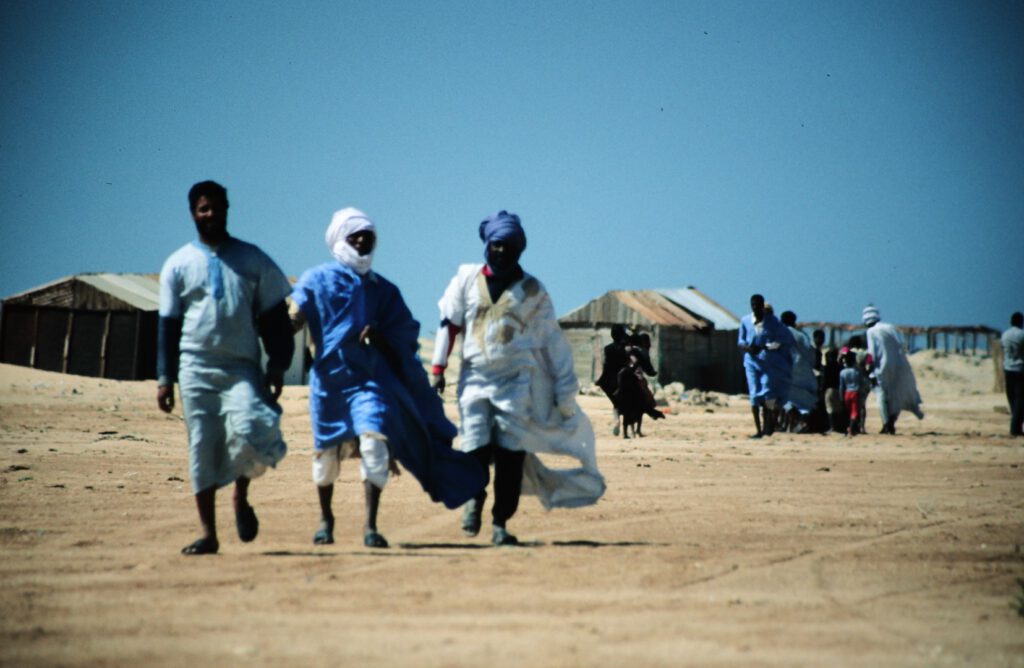
Here Hans and Christian started to look for possible buyers: we stayed at some sort of a campsite, and Hans told people that the cars were on sale. He didn’t have to; the locals started to pour in as soon as we rolled into the grounds. In such situations, one local will always come up and offer to do the necessary arrangements, for a fee of course.
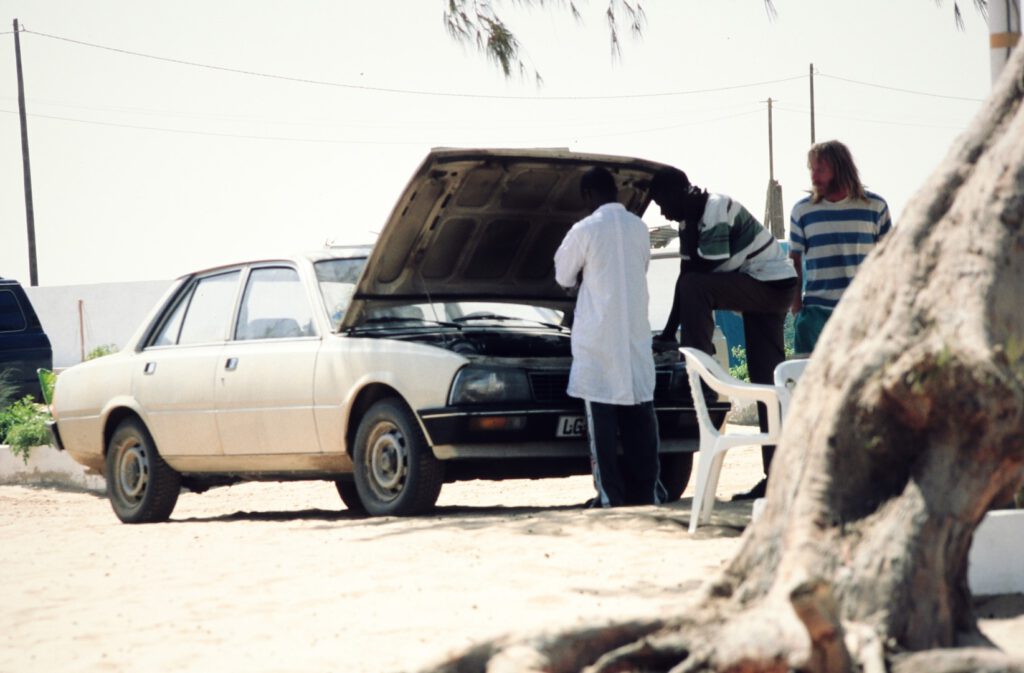
Some of these dealers even work on a percentage base of the final price. But negotiations didn’t go well, so we decided to drive on to Senegal.
Apparently Senegal is not the best country to sell cars – Gambia or Mali seem to be better. This also depends on the make; in some countries Diesel go better than in others. But we were not far away and wanted to see Dakar, so we gave it a try.
Here the border crossing was much more of a nuisance, although we crossed at a very small border station in the middle of the night. The border official was not stupid: when we said we were tourists, he answered: “Okay, so it will not bother you if I put a notice in your passport that you brought in cars…”
Of course it bothered us, because that meant we had to forfeit the Carnets if we sold the cars in Senegal, which would have meant a big financial loss, no profit. “Well, you don’t have to.”, we answered. After hard bargaining we had to give him a 100 US$ bribe, a folding chair and some water canisters – at one point we opened the trunk of the Landcruiser and gave him freedom of choice.
I had met one guy in the convoi who used a false Carnet de Passage, made by an expert forger in Madrid. He also had forged insurance cards etc, letting him cross borders in no time (and with no bribes involved!).
In Senegal Hans and Christian finally sold their cars, after having lots of conspirative meetings and test drives with potential buyers. They made enough profit to come out of the trip just about even.
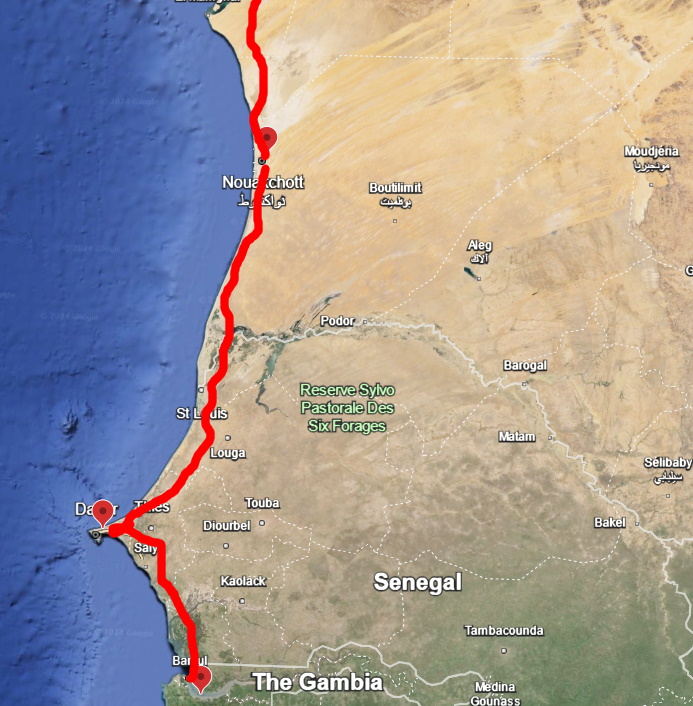
I left them and continued to Gambia by public transport, leaving the comfort of a private vehicle, but also the certainty of doing something very illegal. I moved on to Mali and tried to reach Timbuktu – read about it here.
